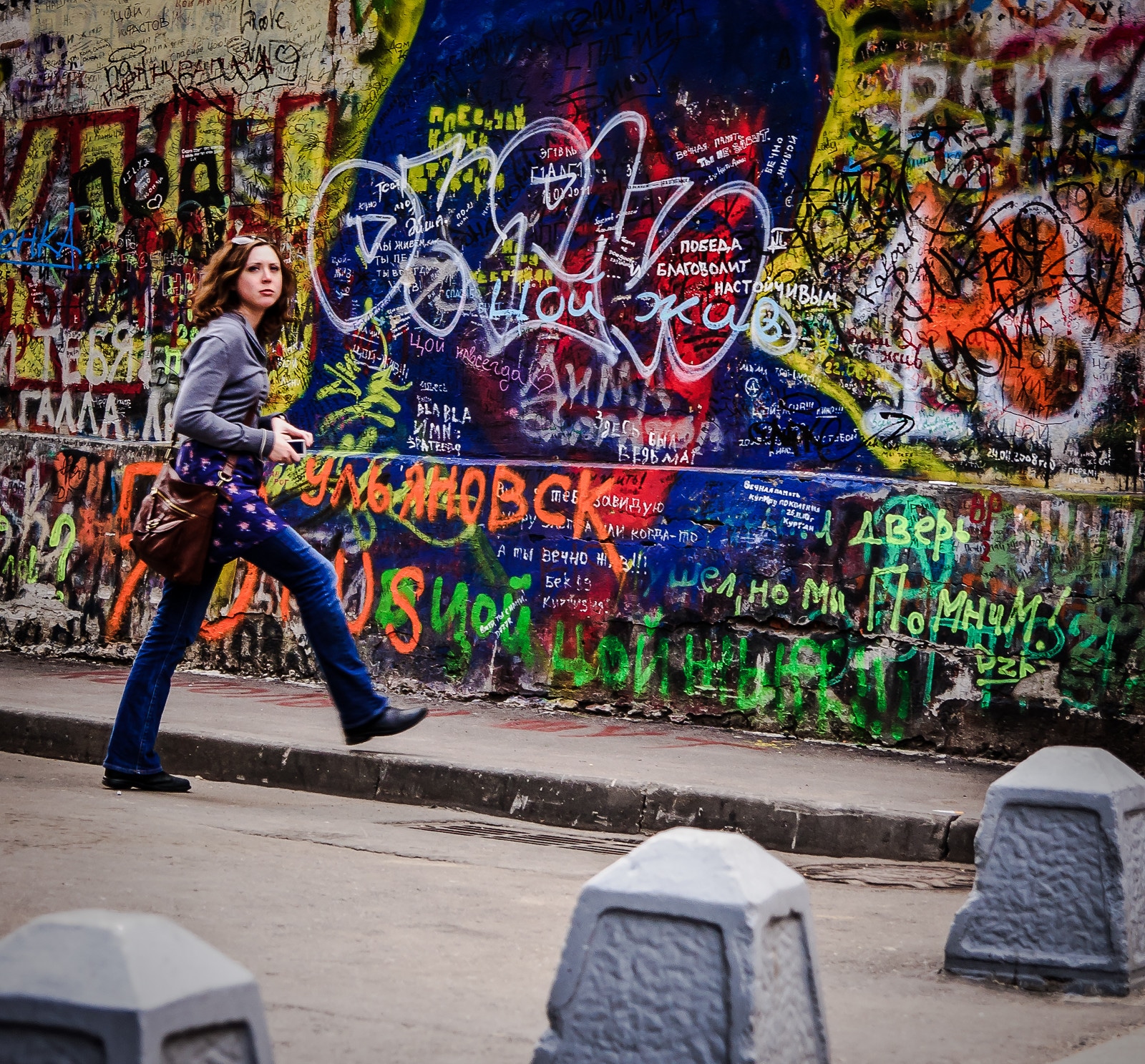Coming across the graffiti wall at the corner of Stary Arbat and Krivoarbatskaya Lane last summer, I took a few pictures, and didn’t think about it much more than that, except that I was surprised to see such elaborate work in such a public place.
So when I visited the same place, and saw that the artwork had changed, I had to find out what it meant and how it was allowed there.
The mural is a memorial to Soviet rock icon Viktor Tsoi. Tsoi was an extremely popular artist who rose to fame in the 1980’s. Tsoi’s continues to be extremely popular among modern Russians as someone who really tapped into the rebellious feelings of the youth of his era. His lyrics encouraged people to stand up and participate in their world. When the government began to lighten up on political music in the 80’s, his message was received more widely. It wasn’t only political; his music was popular by itself; innovative and daring. His popularity was cemented by a sense that he was a humble person. Originally his music was circulated for free, and he kept his day job throughout most of his life.

He died suddenly and young, at age 28 in a car accident. The public grief led to the memorial graffiti mural that we see at Stary Arbat. It began, according to legend with a simple “Tsoi Zhiv!” (Tsoi Lives!) spray painted on the wall. Others followed and added lines from his lyrics, portraits of Tsoi, and poetry dedicated to him. Eventually the wall was full and people started covering over each other’s work. Today, the work is still continually in process and is constantly re-made, changing almost completely from week to week.
It’s only natural that the memorial be graffiti, as it is the embodiment of the artistic rebellion that Tsoi encouraged. There are references to graffiti in Russia dating back to the 9th century. In recent history, it began to be documented in the 1970’s, usually in the form of sports slogans. Over the next decade, more and more graffiti appeared; regarding rock music, political statements, and some that seemed to be purely artistic expression.
Today graffiti in Russia is as widespread and varied as in any other country. Messages of nationalism, xenophobia, and gang membership can be seen in additional to gorgeous urban works of art, images of memorial, messages of peace and politics, protest, and support. Russia even had a Banksy-type artist, P183 whose work appears as urban mixed media. In recent years, Russia has hosted graffiti festivals that encourage artists to explore the medium. Major cities in Russia have routinely hired graffiti artists to add murals to urban environments. Graffiti in Russia has evolved with the century and can now be viewed as artistic expression.
More about Russian Graffiti:
http://postsovietgraffiti.com/the-history-of-street-art-in-russia-part-one/
http://senseslost.com/2012/03/24/grammatika-graffiti-event-in-russia/
http://moscowgraffiti.blogspot.com.au/
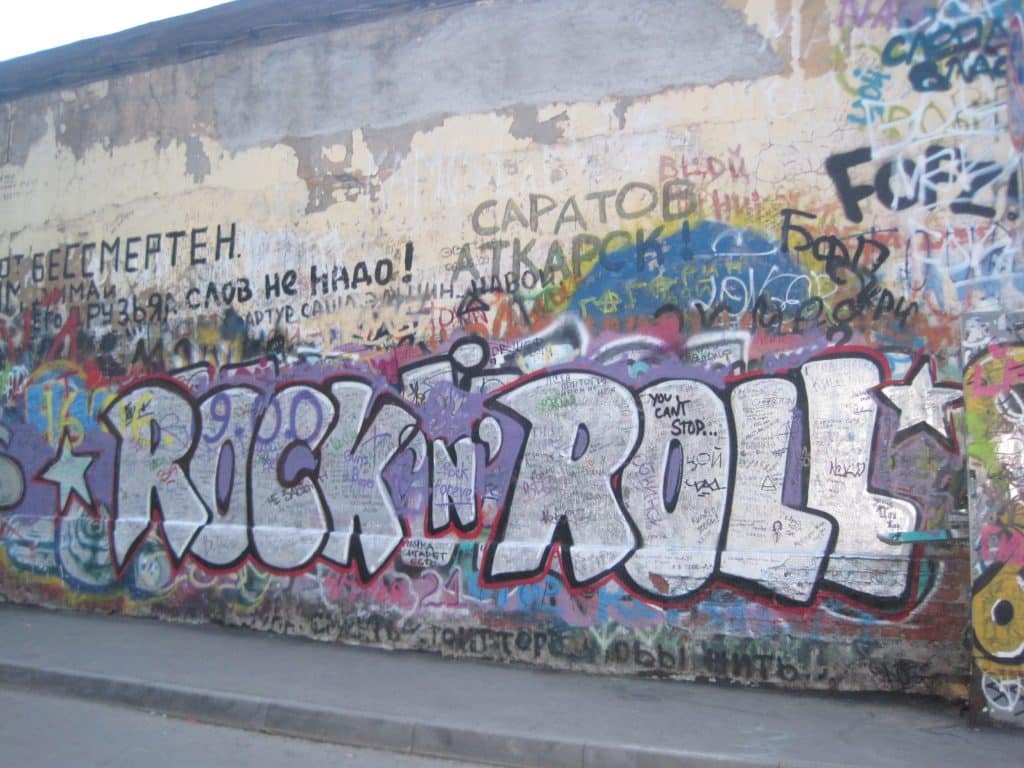
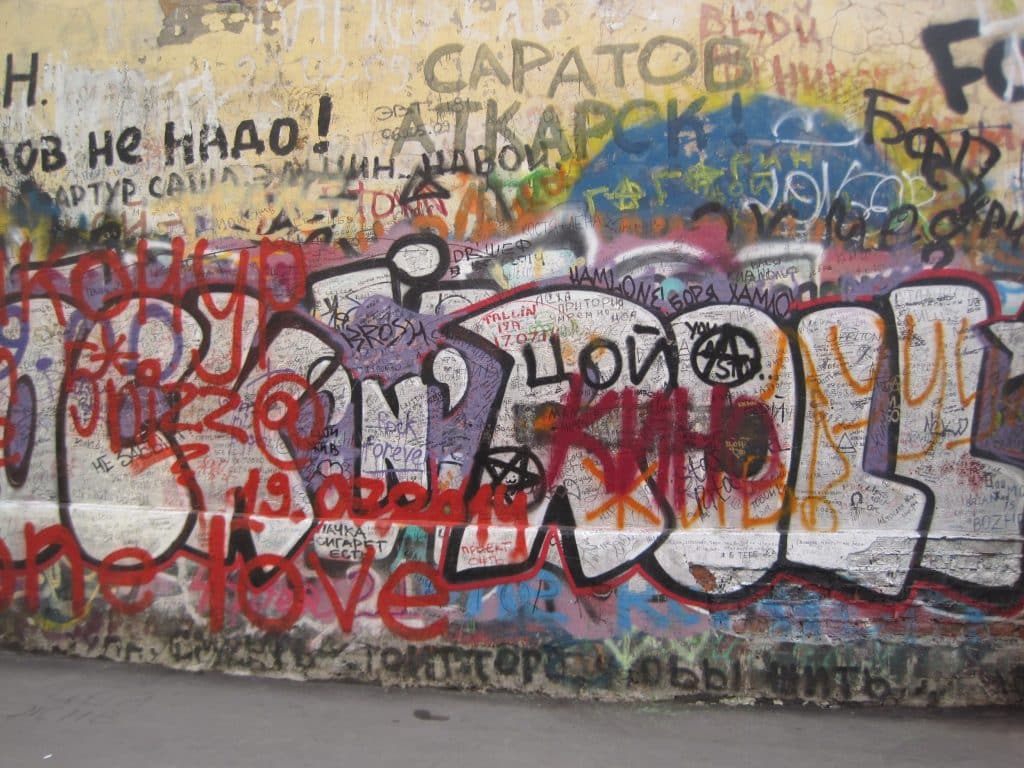
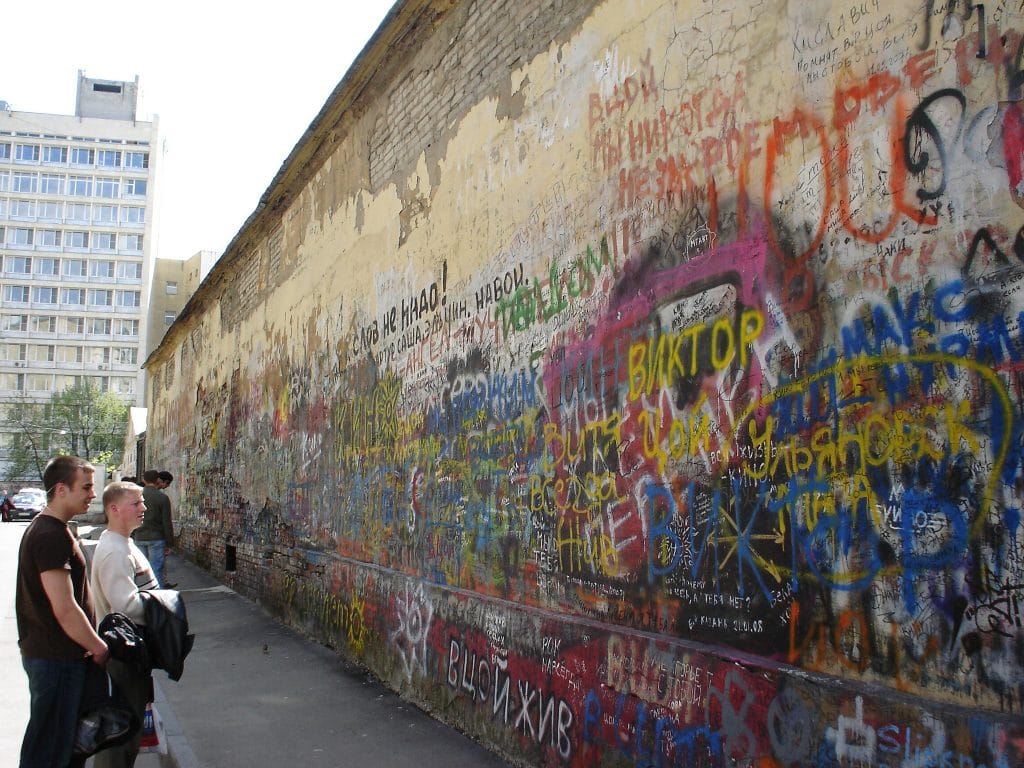
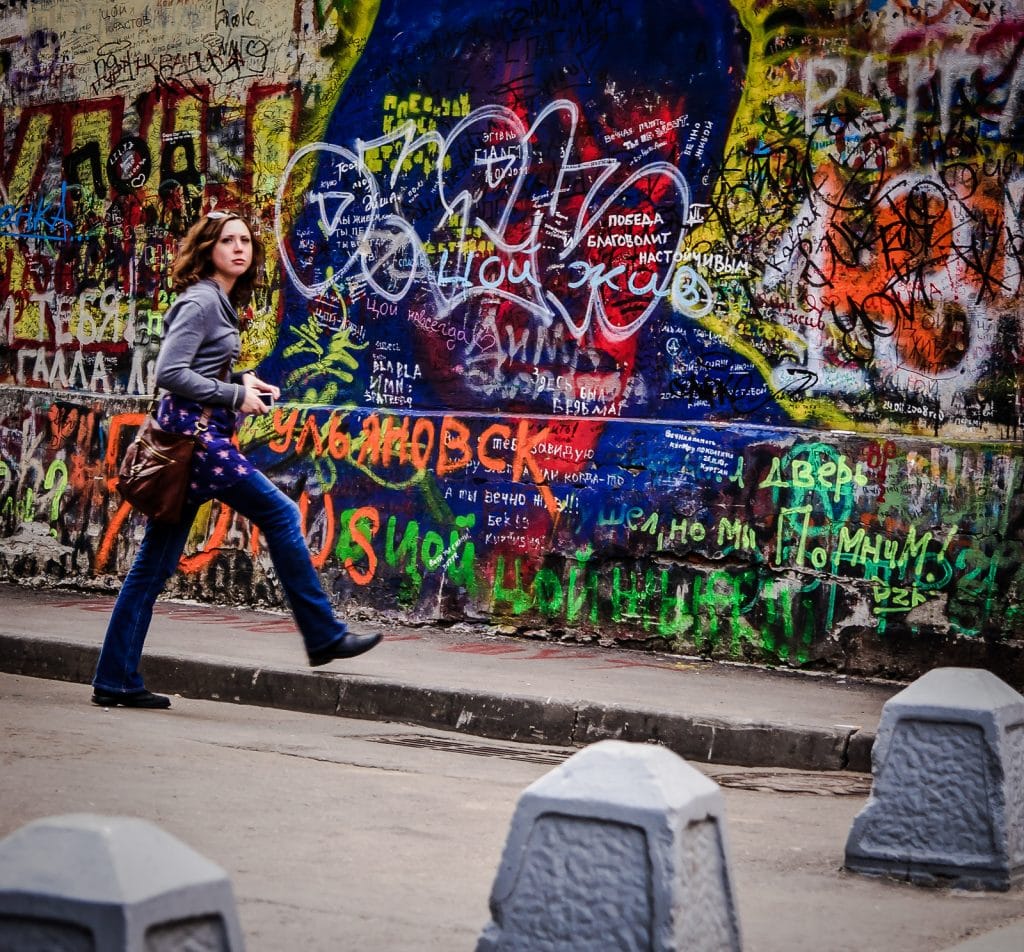
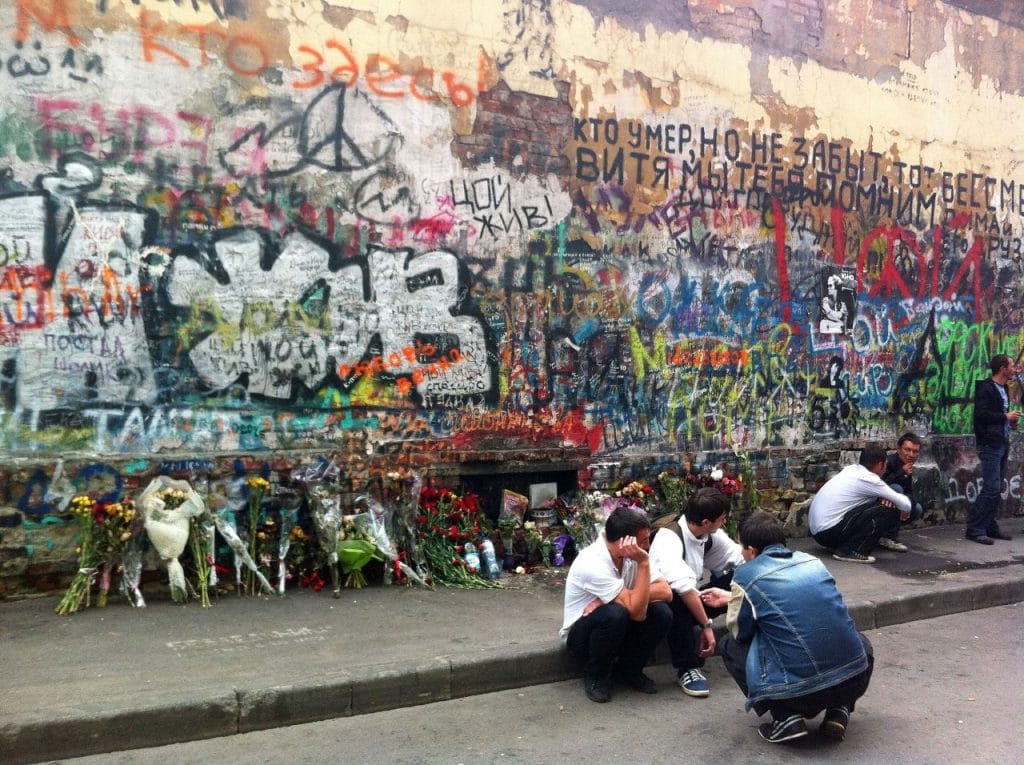
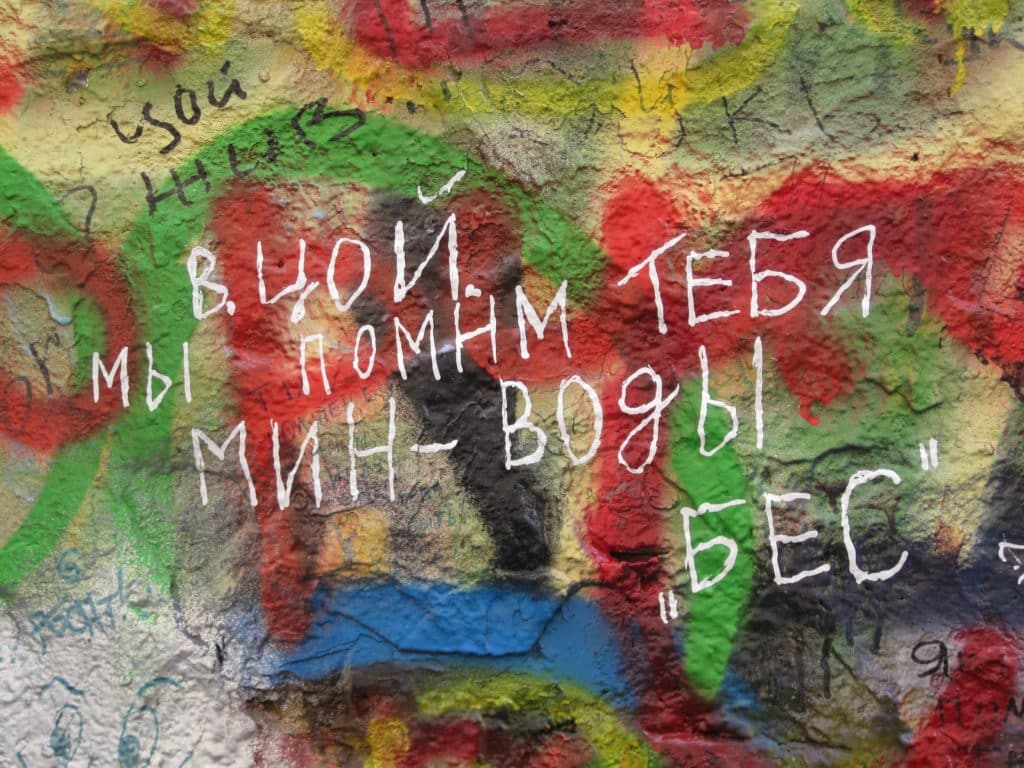
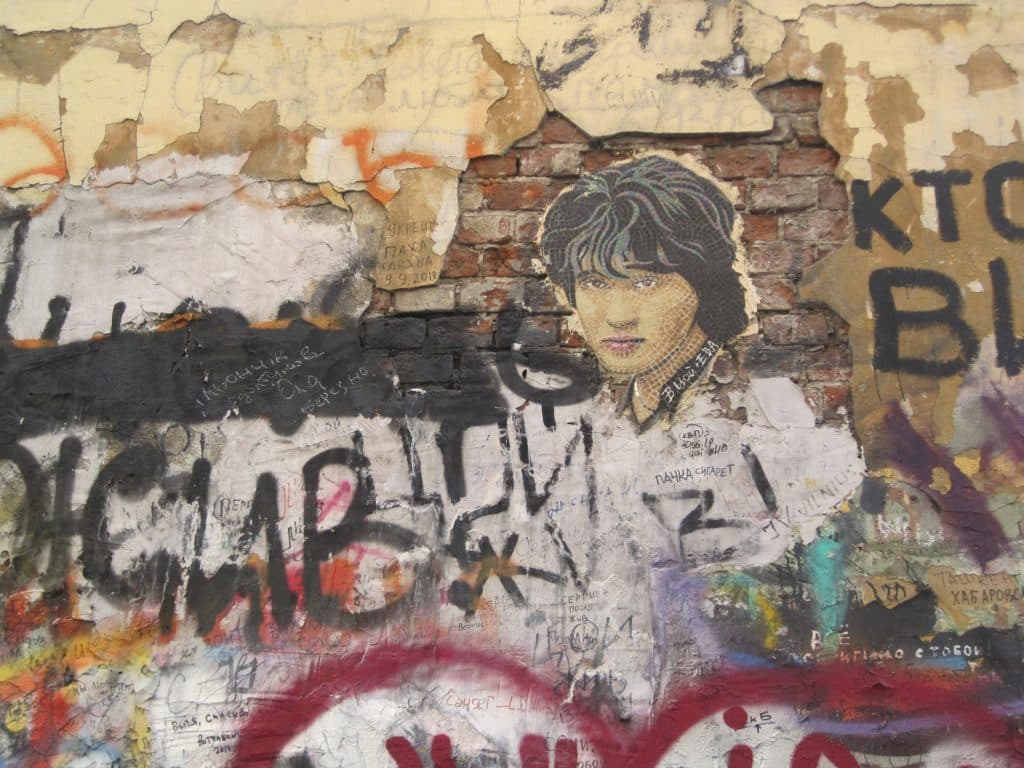
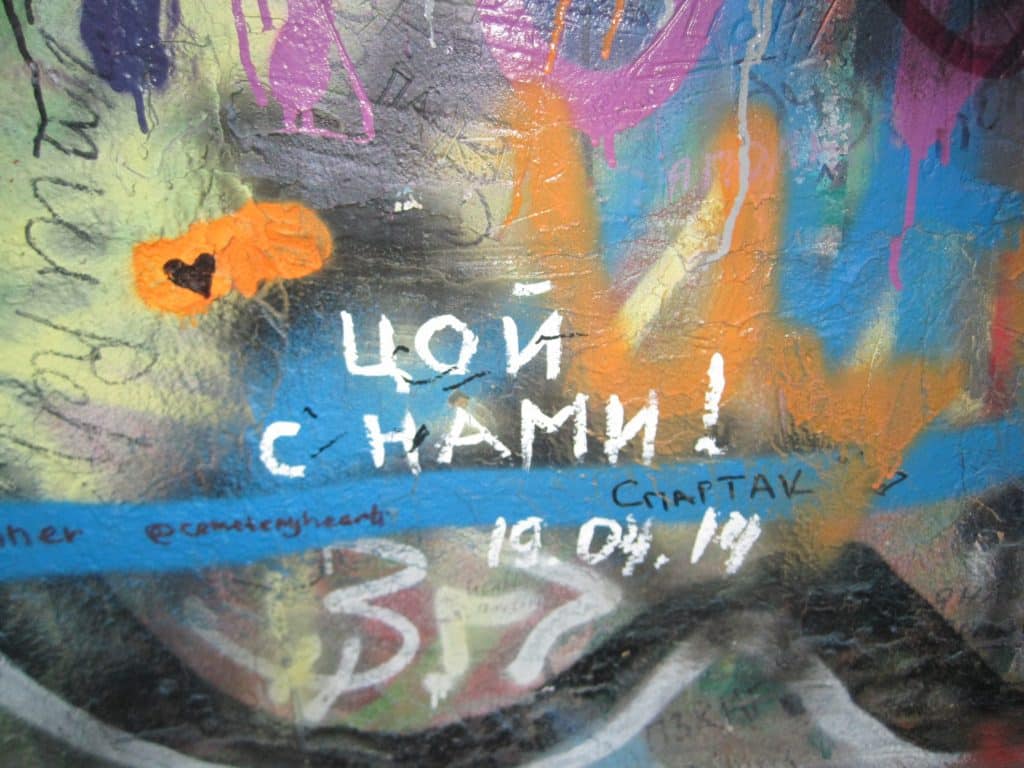
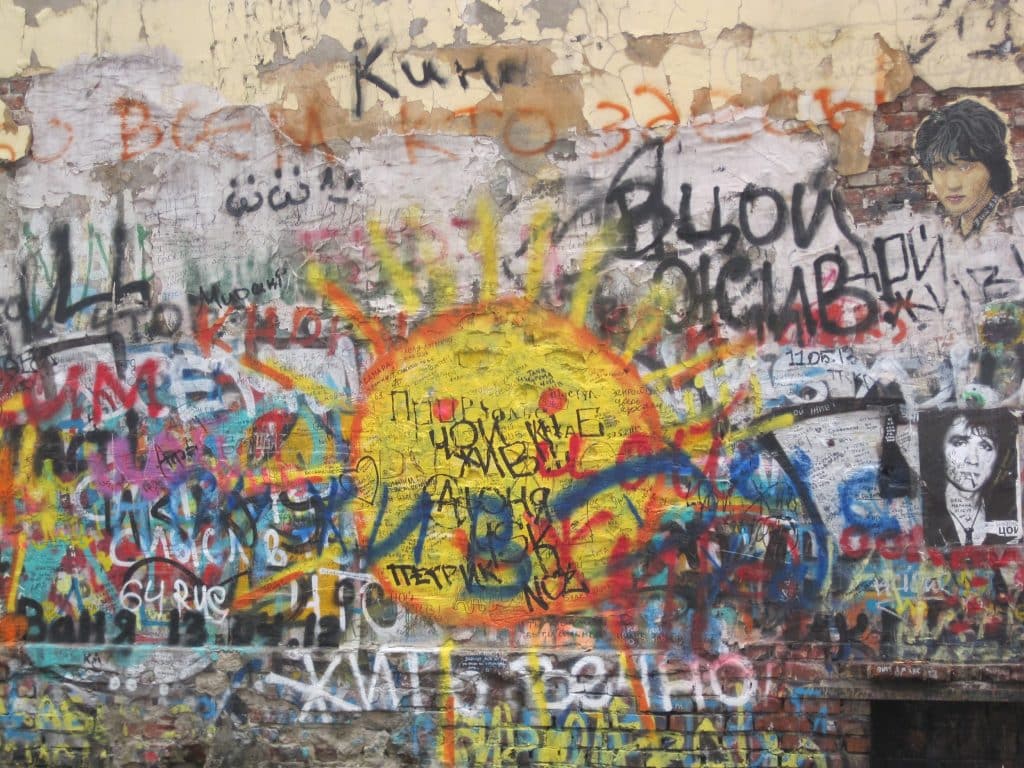
The Viktor Tsoi Memorial Graffiti Wall
Stary Arbat and Krivoarbatskaya Lane
Landmark – Never Closes; Free


